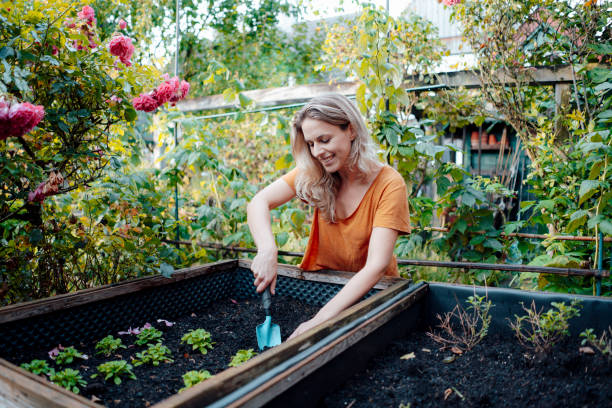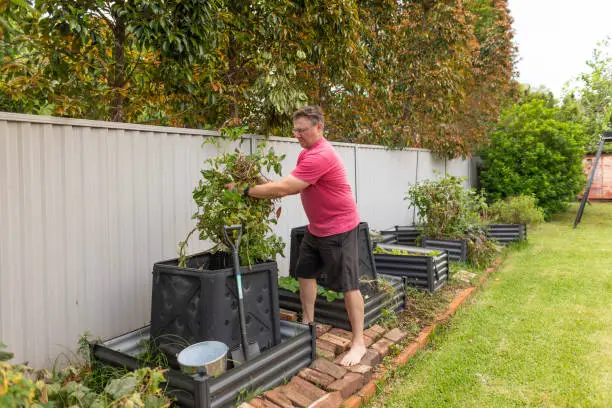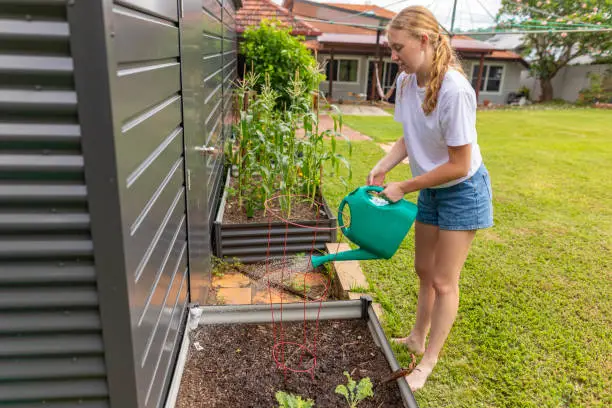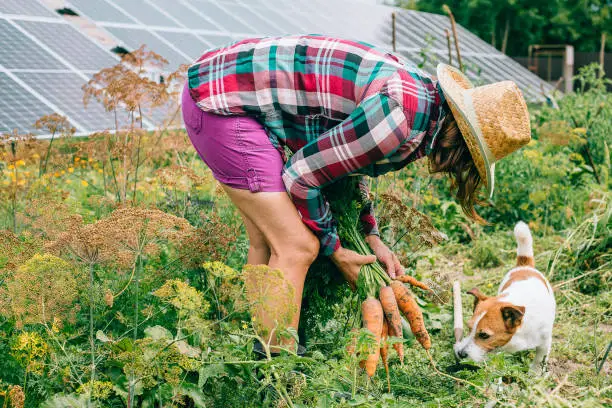DIY Solar Oven for Sustainable Living
The sun is a powerful ally in backyard homesteading and self-sufficiency. Among the many ways to harness solar power, making a handmade solar oven is both creative and sustainable. This renewable energy project combines old methods with modern ecological standards.

Imagine turning the sun’s plentiful energy into culinary equipment. Solar ovens transform sunshine into heat in an efficient place to prepare meals. This technique reduces dependency on conventional energy sources and opens a dialogue with nature, asking us to reassess our relationship with energy.
The essential components of a solar oven are a chamber to hold food, reflecting surfaces to direct sunlight into the chamber, and materials to insulate and trap heat. This project is accessible to a broad audience because it can be used for anything from reused household objects to thermal insulators.
First, choose a box as the main structure. This might be a pizza box for a simple model or a hardwood box for more substantial cooking. Oven size determines capacity, helping users in their outdoor cooking. Insulation, the next crucial stage, fosters inventiveness. Insulate the box with old newspapers, wool, or cotton to keep the sun’s warmth inside.
Reflective surfaces are crucial. Aluminum foil is ideal due to its high reflectivity and ease of use. Foiling the box, top, or flap draws sunlight into the chamber, illuminating it. These surfaces must be adjusted to follow the sun across the sky.
Transparent covers cement the deal. The builder can use clear plastic wrap or glass, depending on resources and tastes. It lets sunshine into the oven and keeps heat within. Greenhouse concepts are used to nourish gardeners rather than plants.
Cooking with the sun goes beyond assembly. Solar ovens take longer than stoves, so patience and flexibility are needed. Its charm resides in that. Sunlight intensity and food type affect cooking time. The solar oven challenges and rewards with a unique culinary rhythm, from baking bread in the afternoon to slow-cooking stew all day.
Discovering sustainable living through solar oven construction is more than just building. The project raises worries regarding energy use and environmental impact. It promotes active energy participation and balances human demands and ecological health.
As a homestead fixture, the solar oven symbolizes opportunity. It shows how renewable energy projects, even a DIY oven, may shift our worldview. Beyond cooking, these lessons show how to create a sustainable future that values the sun’s gift as a crucial, accessible resource.
Projects like the solar oven add to the ongoing discussion of renewable energy and environmental issues. They are practical tools and instructional platforms that show sustainability requires creativity, adaptation, and hope. Here, the DIY solar oven is more than a cooking gadget; it’s a beacon of a sustainable future, lit in backyard homesteading.
Homestead Energizer: Building a Compact Biogas System for Sustainability
Self-reliance drives backyard homesteading innovation, notably in sustainable energy. One option is building a tiny home biogas plant to recycle trash and generate power. This project shows how homesteaders can use organic waste to generate power, advancing sustainability.
Anaerobic digestion, where microorganisms break down organic waste without oxygen, produces biogas a mixture of methane and carbon dioxide the basis of a home biogas system. Waste management becomes an energy solution when biogas is used for cooking, heating, and electricity.
To start this journey, one needs to understand the essential components of a biogas system: an anaerobic digester tank, an intake for organic waste, an outlet for the digested material, and a biogas storage unit. Despite its simplicity, the design perfectly balances waste reduction and energy production.
Digester tank selection is crucial. Homesteaders can build digesters from concrete, plastic, or metal, depending on budget and availability. Sealing the tank creates an oxygen-free environment, and the inlet and outflow must be carefully designed to feed waste and remove digestate. This nutrient-rich byproduct makes excellent natural fertilizer.
Daily digester feeding is the biogas plant’s heartbeat. Kitchen scraps, yard refuse, and animal manure provide organic matter for the system. This approach reduces landfill waste and promotes homesteading’s development and renewal cycle.
As the digester starts, microbial activity discreetly converts organic materials into biogas. This gas is held in a gas holding or digester tank, ready to be fed to stoves, heaters, or generators. Biogas stoves convert waste to energy with a blue flame, a simple yet powerful symbol of sustainable living.
Building a biogas system on a homestead requires attitude and mechanics. It entails accepting nature’s cycles, finding value in what is typically discarded, and investing in the homestead and the environment’s long-term health. This project embodies permaculture by merging waste management and energy production into an autonomous system.
Home biogas plants provide energy independence, resilience, and a reduction of external sources. They are scalable, practical, and adaptable to homeowner demands and resources in renewable energy projects.
Home biogas systems provide benefits beyond energy production. The nutrient-rich digestate feeds the soil for the following growth cycle. This closed-loop system shows how homesteads can help create a sustainable future by balancing ecology and resources.
Building a tiny home biogas plant is challenging and exciting. It requires creativity, patience, and a comprehensive understanding of life processes. Each step, from choosing materials to feeding the digester, is an opportunity to learn, grow, and connect with nature.
Community action includes biogas installation. Wisdom from shared experiences, triumphs, and lessons learned can motivate renewable energy ventures. Homesteaders demonstrate the advantages of alternative energy options and promote sustainable living.
A little home biogas plant shows what can be accomplished when invention and intention meet in backyard homesteading. It represents a dedication to living gently on Earth and using nature for a sustainable future. Recycling garbage into energy helps homesteaders become self-sufficient, resilient, and in tune with nature.
Building a biogas plant is full of discoveries, challenges, and rewards. It leads to energy generation and a better understanding of Earth’s cycles. This makes the homestead a microcosm of possibility, where sustainability is lived one day, meal and flame at a time.






Leave a Reply